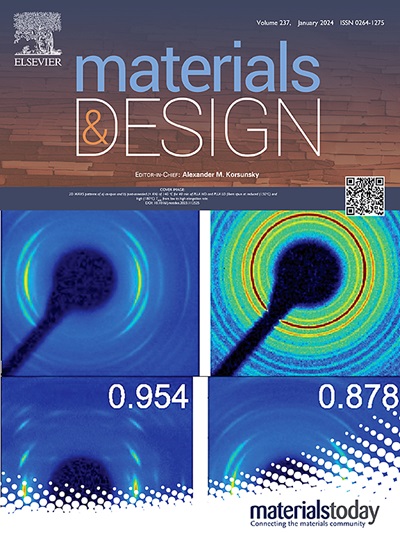Optimizing foamed glass production with machine learning
IF 7.9
2区 材料科学
Q1 MATERIALS SCIENCE, MULTIDISCIPLINARY
引用次数: 0
Abstract
Foamed glass is a lightweight material commonly used for insulation. However, optimizing its properties remains a challenge due to the large number of synthesis parameters involved in its production. While previous studies have investigated synthesis conditions, a comprehensive study applying machine learning approaches is lacking in the literature. In this paper, we apply machine learning methods, i.e., random forests of predictive clustering trees and a multilayer perceptron, training them on 124 experimental data points to accurately predict the apparent density and closed porosity of foamed glass. We then apply a multiobjective optimization algorithm together with the multilayer perceptron to find optimal values for the process parameters used in foamed glass production. Our results show that the combination of machine learning and multiobjective optimization is an effective proxy for the development of novel foamed glass materials.

利用机器学习优化发泡玻璃生产
泡沫玻璃是一种轻质材料,通常用于隔热。然而,由于其生产过程中涉及大量的合成参数,优化其性能仍然是一个挑战。虽然以前的研究已经调查了合成条件,但文献中缺乏应用机器学习方法的全面研究。在本文中,我们应用机器学习方法,即预测聚类树的随机森林和多层感知器,对124个实验数据点进行训练,以准确预测发泡玻璃的表观密度和封闭孔隙率。然后,我们将多目标优化算法与多层感知器一起应用于泡沫玻璃生产中使用的工艺参数的最优值。我们的研究结果表明,机器学习和多目标优化的结合是开发新型发泡玻璃材料的有效代理。
本文章由计算机程序翻译,如有差异,请以英文原文为准。
求助全文
约1分钟内获得全文
求助全文
来源期刊

Materials & Design
Engineering-Mechanical Engineering
CiteScore
14.30
自引率
7.10%
发文量
1028
审稿时长
85 days
期刊介绍:
Materials and Design is a multi-disciplinary journal that publishes original research reports, review articles, and express communications. The journal focuses on studying the structure and properties of inorganic and organic materials, advancements in synthesis, processing, characterization, and testing, the design of materials and engineering systems, and their applications in technology. It aims to bring together various aspects of materials science, engineering, physics, and chemistry.
The journal explores themes ranging from materials to design and aims to reveal the connections between natural and artificial materials, as well as experiment and modeling. Manuscripts submitted to Materials and Design should contain elements of discovery and surprise, as they often contribute new insights into the architecture and function of matter.
 求助内容:
求助内容: 应助结果提醒方式:
应助结果提醒方式:


